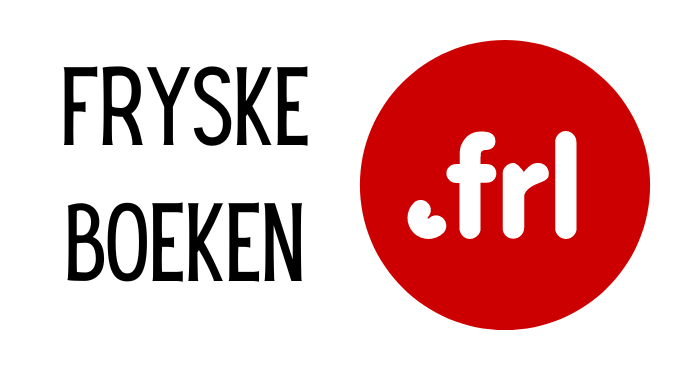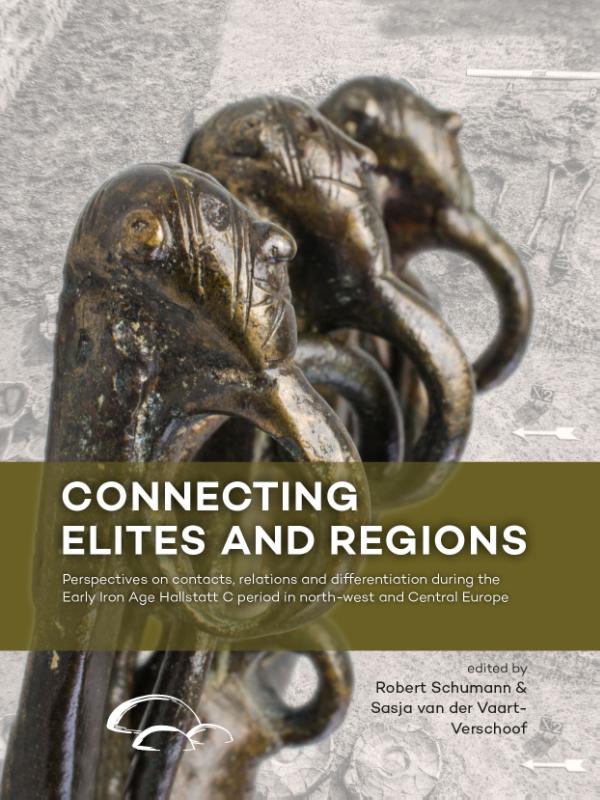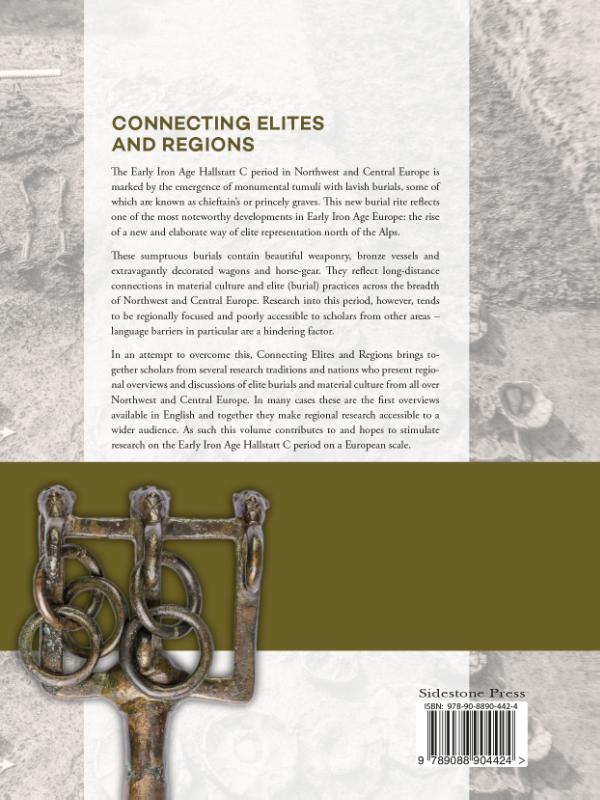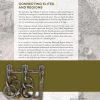Connecting Elites and Regions
€ 150,00
perspectives on contacts, relations and differentiation during the Early Iron Age Hallstatt C period in north-west and Central Europe
Schumann, Robert | Hardback | 31-10-2017 | 9789088904431 |
Levertijd 5 dagen
The Early Iron Age Hallstatt C period in Northwest and Central Europe is marked by the emergence of monumental tumuli with la…
perspectives on contacts, relations and differentiation during the Early Iron Age Hallstatt C period in north-west and Central Europe
Schumann, Robert | Hardback | 31-10-2017 | 9789088904431 |
Levertijd 5 dagen
The Early Iron Age Hallstatt C period in Northwest and Central Europe is marked by the emergence of monumental tumuli with lavish burials, some of which are known as chieftain’s or princely graves. This new burial rite reflects one of the most noteworthy developments in Early Iron Age Europe: the rise of a new and elaborate way of elite representation north of the Alps.
These sumptuous burials contain beautiful weaponry, bronze vessels and extravagantly decorated wagons and horse-gear. They reflect long-distance connections in material culture and elite (burial) practices across the breadth of Northwest and Central Europe. Research into this period, however, tends to be regionally focused and poorly accessible to scholars from other areas – language barriers in particular are a hindering factor.
In an attempt to overcome this, Connecting Elites and Regions brings together scholars from several research traditions and nations who present regional overviews and discussions of elite burials and material culture from all over Northwest and Central Europe. In many cases these are the first overviews available in English and together they make regional research accessible to a wider audience. As such this volume contributes to and hopes to stimulate research on the Early Iron Age Hallstatt C period on a European scale.
Contents:
Preface
Robert Schumann and Sasja van der Vaart-Verschoof
Differentiation and globalization in Early Iron Age Europe. Reintegrating the Early Hallstatt period (Ha C) into the debate
Sasja van der Vaart-Verschoof and Robert Schumann
Moravia – a connecting Line between North, West and South. To the supra-regional connections and formation of elites in the Early Hallstatt period
Erika Makarová
The Iron Age cremation cemetery of Wörgl in Tyrol and the Early Hallstatt Mindelheim horizon
Markus Egg
Animals to honour the ancestors: on animal depositions in barrows of the northeast Alpine Hallstatt region
Petra Kme?ová
Hallstatt C sword graves in Continental Gaul: rise of an elite or new system of representation of self in a context of crisis?
Pierre-Yves Milcent
Hallstatt elite burials in Bohemia from the perspective of interregional contacts
Martin Trefný
A cluster of chieftains’ graves in the Netherlands? Cremating and inhumating elites during Ha C on the Maashorst, the Netherlands
Richard Jansen and Sasja van der Vaart-Verschoof
Textile symbolism in Early Iron Age burials
Christoph Huth and Monika Kondziella
Identification and chronological aspects of western influence in northeast Alpine region of Hallstatt culture
Laco Chmelo
Elites before the Fürstensitze: Hallstatt C sumptuous graves between Main and Danube
Manuel Fernández-Götz and Bettina Arnold
The Early Iron Age in Belgium: earth and fire, and also water
Eugène Warmenbol
Textiles as Early Iron Age prestige goods – a discussion of visual qualities
Karina Grömer
‘Elite graves’ in Bavaria. Considerations of practices, status and communication of Early Hallstatt communities
Melanie Augstein
New approaches to tracing (landscape) connections on the southeastern fringes of the Alps in the Early Iron Age: the state of (integrated) research in eastern Slovenia
Matija ?re?nar
Elites in the cemetery at Hallstatt, Upper Austria
Bettina Glunz-Hüsken
French elite burials of the Early Iron Age
Laurie Tremblay Cormier
A practice perspective: understanding Early Iron Age elite burials in the southern Netherlands through event-based analysis
Quentin Bourgeois and Sasja van der Vaart-Verschoof
New research on sword graves of the Hallstatt C period in Hesse
Wolfram Ney
The Early Hallstatt elite burials in Belgium. An analysis of the funerary ritual
Guy De Mulder
At the crossroads of the Hallstatt East
Carola Metzner-Nebelsick
| Gewicht | 1,506 kg |
|---|---|
| Afmetingen | 28,7 × 21,6 × 2,8 cm |
| Taal | Engels |
| Uitvoering | Hardback |
| Auteur | Schumann, Robert |
| Verschijningsjaar | 2017 |
| ISBN | 9789088904431 |
| Leverdagen | 5 |







